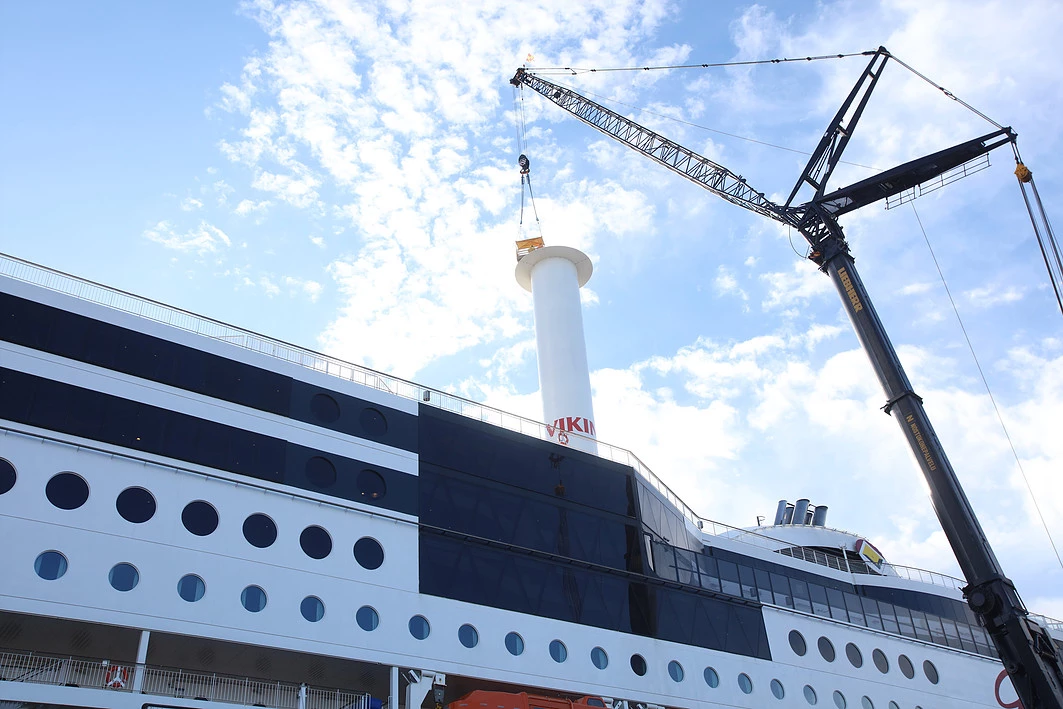Last year we detailed how Finland's Norsepower had rediscovered an engineering innovation from the 1920s called the rotorsail, which sees large cylinders installed atop big ships harness wind for propulsion. Now a passenger ship operated by the Viking Line has been treated to the Rotor Sail Solution and has set sail on wind-assisted trips between Finland and Sweden.
The M/S Viking Grace – which has 880 cabins and can accommodate 2,800 passengers and around 500 cars – went into service in 2013, when it was reported to be the first ship of its size to be fueled by Liquefied Natural Gas (LNG). Its hull was hydrodynamically-optimized for low fuel consumption and soundproofing technology was fitted to keep noise down. So it already boasted some noteworthy green credentials.

A single Rotor Sail cylinder measuring 24 meters (78 ft) tall and 4 meters (13 ft) in diameter has now been installed on the passenger vessel, which is described as a modern version of the Flettner rotor.
The technology makes use of the Magnus effect, where wind passing a spinning cylinder moves the air faster on one side than the other and results in thrust at 90 degrees to the wind direction. The Norsepower system uses sensors to determine when the wind is strong enough to result in fuel savings, then the rotors automatically kick in and the sea wind helps the Viking Line's flagship vessel to move along.
As well as reducing overall fuel consumption, the addition of the Rotor Sail technology is expected to reduce carbon emissions by up to 900 tonnes per year.
The M/S Viking Grace began ferrying passengers between Turku in Finland and Stockholm, Sweden, on April 12. You can find out more from the subtitled video below. The Viking Line has also revealed that two Rotor Sails are set to be installed on a new build ferry expected to be operational by 2020.
Source: Norsepower






